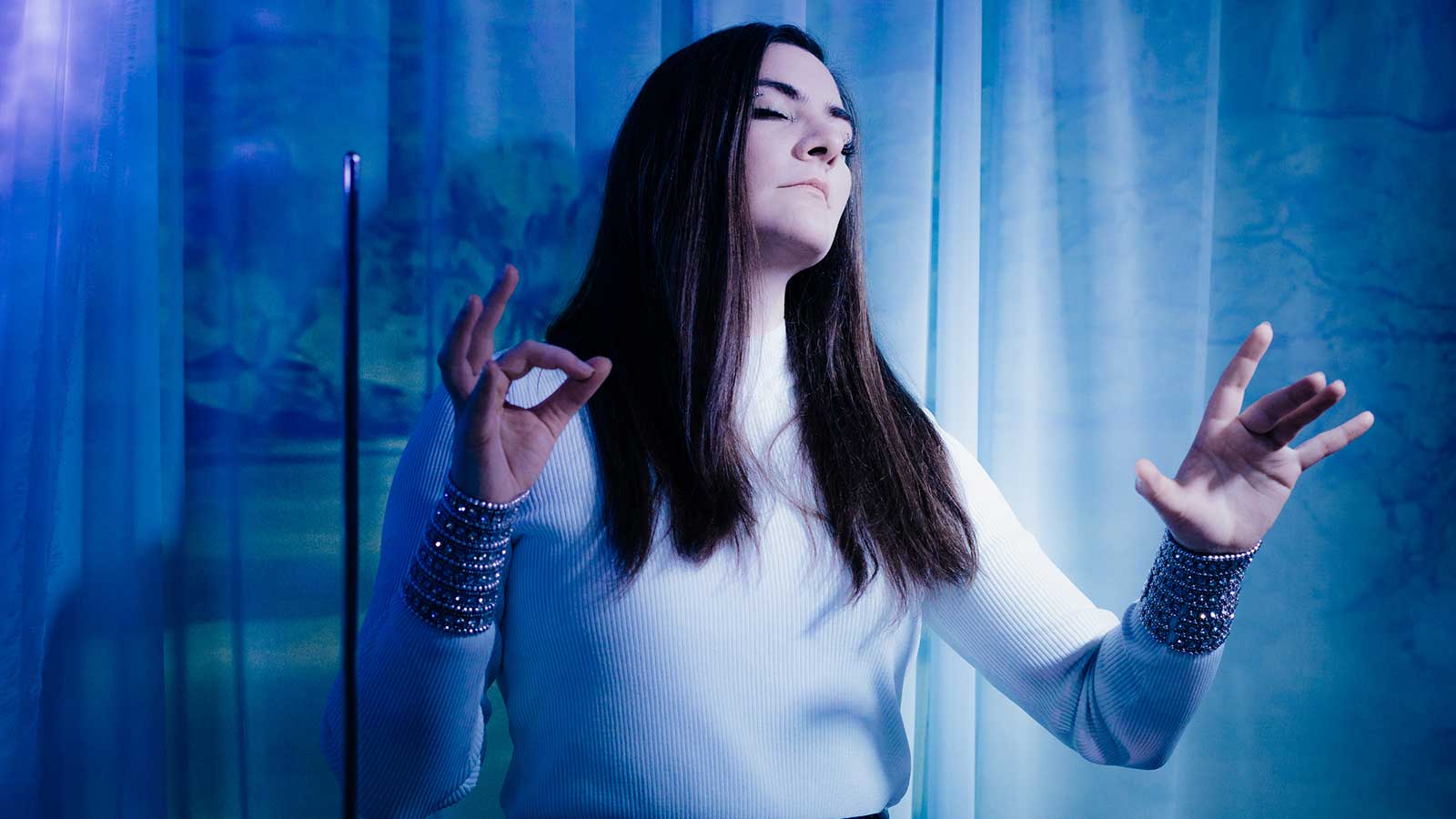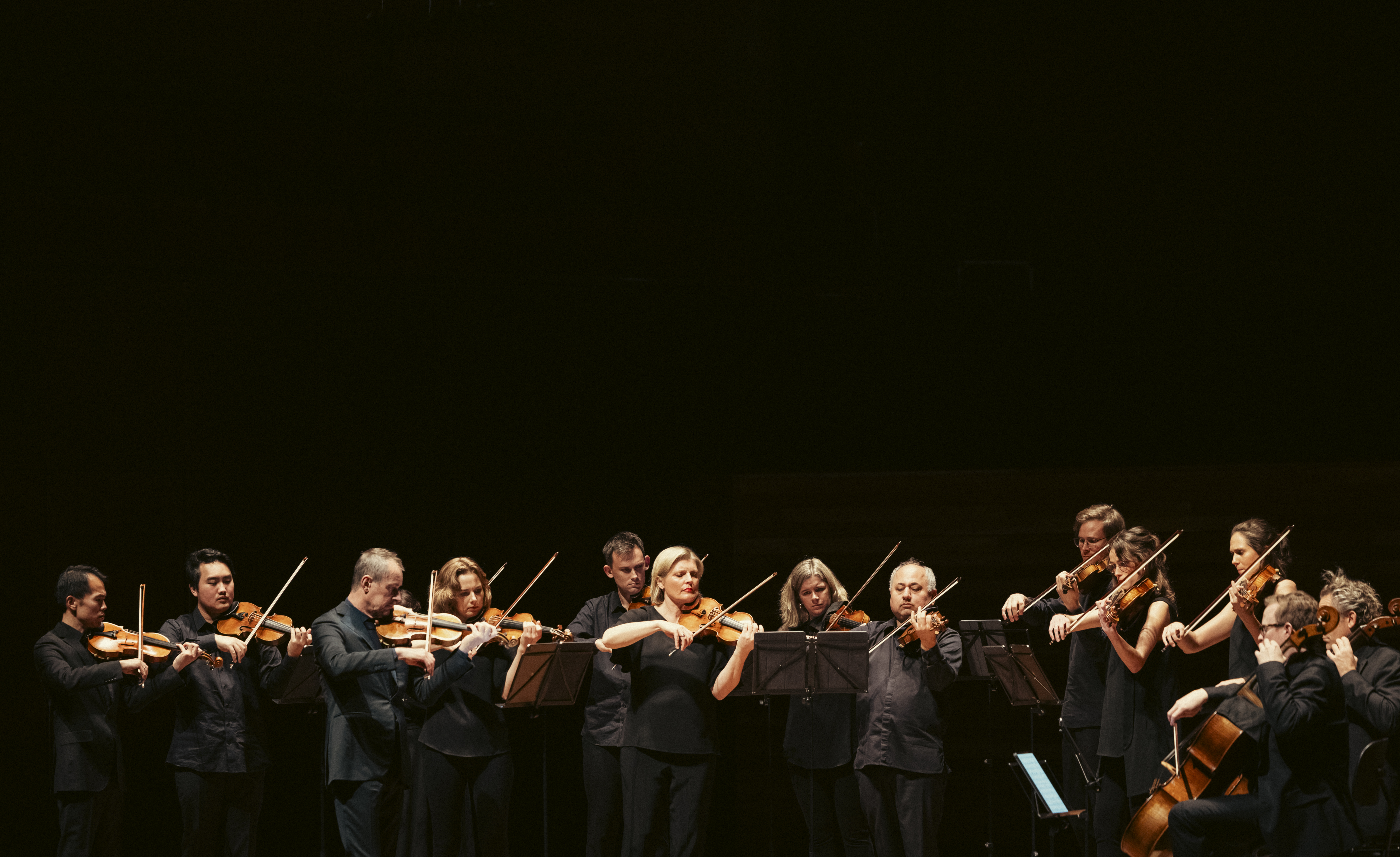

Carolina Eyck is the internationally renowned superstar of the theremin.
When Eyck plays her instrument, she stands poised, hands aloft, making intricate moves but touching nothing. Out pours a melody that speaks of other worlds. It looks, and sounds, like magic.
But how does the theremin work? And how did Eyck even encounter this unique and beguiling instrument, deciding to make it her defining purpose?
Here’s everything you need to know…
Who is Carolina Eyck?
Made in Berlin
Like much of European culture's most cutting-edge contemporary creativity, Carolina Eyck's was formed in and around Berlin, where she was born in 1987.
Her music-making began at the piano keyboard (she started lessons when she was five) and the violin (six), and she was enrolled in a specialist music school. It was here that the smooth whooping, swooning sound of the theremin glided invisibly into her ears, and she began lessons with Lydia Kavina, a relative of Leon Theremin, who was the inventor of the instrument.
A musical prodigy
On top of the piano, the violin and now the theremin, Eyck was a composer, and she combined her love for the other-worldly electronic instrument with her instinct to put pen to paper. She won awards for her compositions when she was still at school.
She also became so proficient at playing the theremin that by the age of sixteen she had developed her own way of playing the instrument.
“If there’s anyone who can harness the theremin’s wild potential, it’s Eyck, who as a teenager developed her own method of playing the instrument.”
– Boston Globe
Carolina Eyck's eight-finger position method of playing the theremin
When she was just sixteen, the theremin virtuoso developed a new precise playing technique, called the 8-finger position technique. She documented it when she became the first person to publish an extensive theremin method book, The Art of Playing the Theremin.
Eyck's method allows the theremin player to tune the instrument to their hand and rely on their finger positions, rather than correcting notes after they are audible. This method is now being used by thereminists around the world and has revolutionised how the instrument is played.
Theremin & Voice technique
Eyck's pioneering brilliance didn't stop there. She also developed a way of looping and electronics to expand the voice of the instrument. “She breaks new ground by using a surround sound system, allowing her theremin to break free and fill the space,” an explanation on her website says. “Loops and choirs developed on stage fly through the room in sync with the movements of her dance-like performance. Balancing between minimal and progressive electronic music, Carolina's melodic and partly fixed composition style leaves plenty of space for her virtuoso improvisations.”
While developing her groundbreaking techniques, Eyck has maintained a career performing classical works with some of the best orchestras, and on some of the biggest stages, in the world, including the Walt Disney Concert Hall in Los Angeles, the Kennedy Center for the Performing Arts in Washington D.C. and the Konzerthaus Berlin, with yhe Berlin Radio Symphony Orchestra, BBC Philharmonic, Bern Symphony Orchestra, San Francisco Ballet Orchestra and more.
“Carolina Eyck has done much to rid the theremin of its gimmick status and legitimize it as an instrument that can credibly take its place in any number of serious music contexts.”
– Textura


What is a theremin?
One of the world's first electronic instruments
In the early 20th Century, as the power and potential of electricity and electronics had spread into music and looked set to stay, a Russian physicist called Lev Sergeyevich Termen, AKA Theremin, invented a machine that could use radio waves to measure the properties of gas.
The machine had a secondary ability: to emit sound.
A cellist in his own time, Theremin knew what he had stumbled on, and, with a little fine tuning of the concept, worked hard create a fully chromatic electronic instrument. He introduced it to soviet leader Vladimir Lenin at the Kremlin in 1922, and played it in Berlin for Albert Einstein in 1927, before taking it around the world.
How does the theremin work?
The theremin is the only instrument we can think of that you play without touching, or making physical contact with, anything whatsoever.
The instrument typically consists of a box with two metal antennas which create an electromagnetic field. The instrument has a horizontal plane, and a vertical rod, and the sound itself is from magnetic waves emitting from the vertical rod.
The performer’s body is an electrical control, and changes in tones and pitches are made by the player – known by their proper name as the thereminist – making shapes and movements in their right hand and fingers inside the electromagnetic area those waves are filling. Their limbs are interrupting and redirecting waves to make music.
“When the right hand approaches the antenna, the pitch gets higher,” Carolina Eyck explains on her website. “When the hand moves away from it, the pitch gets lower again. Small, rapid movements of the right hand can create vibrato.”
Volume is typically controlled by movements of the left hand close to a metal ring at the left of the instrument.
“It’s such an amazing instrument to play, and one with so much history dating back to the Weimar years, that age of invention, of discovery, of extreme curiosity. Carolina will bring all of that to the concert,” ACO Artistic Director Richard Tognetti says.
What does the theremin sound like?
The theremin is utterly unique. It’s a sound you’ve definitely heard, even if you’ve never heard of it.
The theremin can create a thousand different colours and moods. Come with us as we experience them all: serenity and beauty, longing and danger, mystery and wonder.
It's smooth and eerie sound has landed the theremin in a firm science fiction and horror soundtrack box. Think 1950s sci-fi like The Day the Earth Stood Still. But it's also in TV soundtracks that include Midsummer Murders and Loki.
It's often used to create eerie, other-worldly effects, but it's also had plenty of dedicated classical music compositions penned in its honour, including works by Bohuslav Martinu, Joseph Schillinger, Percy Grainger, Fazil Say, Andrew Norman and Kalevi Aho.
Watch Carolina Eyck explaining more
“It’s such an amazing instrument to play, and one with so much history dating back to the Weimar years, that age of invention, of discovery, of extreme curiosity. Carolina will bring all of that to the concert.”ACO Artistic Director Richard Tognetti
An otherworldly experience, embraced by classical and popular culture
Hearing and seeing the theremin in concert is really to be transported to another world.
Shostakovich was one of the first composers to out the theremin into his orchestral pieces and film scores, and composers have written for the instrument since, including Bohuslav Martinu, Joseph Schillinger, Percy Grainger, Fazil Say, Andrew Norman and Kalevi Aho.
Now Carolina Eyck is bringing the instrument to the Australian Chamber Orchestra. Come with us as we experience it's incredible sound: serenity and beauty, longing and danger, mystery and wonder. From the swinging sounds of The Beach Boys and the unmistakable Star Trek theme, to a new commission from Australian composer Holly Harrison, and closing with the riotous thrumming of the Flight of the Bumblebee, this is a concert full of fun that will truly take you to other worlds.
We can’t wait to experience it.
Single tickets & subscriptions for ACO 2025, our 50th Anniversary Season, are now on sale.
Click here to discover and book Theremin & Beyond, starring Carolina Eyck on the theremin and directed by Richard Tognetti, touring to Wollongong, Sydney, Brisbane, Melbourne & Canberra, 8–20 May.
